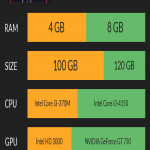As prices of IT equipment are skyrocketing, it has become crucial to Safeguard your devices. Today we look the best practices to charge your devices.
1. Always plug your charger into the wall/extension socket first (making sure it is well fitted) before connecting to the Phone, Laptop etc. Doing this prevents the device from any power fluctuations.
2.According to battery experts, the best charging range is between 40%-80%. Thus you can charge your battery back to 100% whenever it falls between 80%-40%. Also disconnect the charger whenever charging is complete as batteries naturally weaken over time hence reducing their efficiency. Overcharging them speeds up this process as overcharging stresses out lithium-ion batteries found in modern day devices.
Also note that batteries tend to degrade more quickly when allow to drain to 0% (zero) therefore, if for any reason, your device is going to stay idle for a long time (weeks, months etc), try to switch it on from time to time and check the battery, charge if possible.
Our Advice; there have been many instances where people allowed their batteries to drain to 0% and they couldn't charge it back up again, they had to buy a new battery and replace.
We therefore suggest if for any reason you cannot charge your battery immediately, consider turning your phone off when it reaches 10%.
Sometimes batteries refuse to charge back because the ions are too far apart to come together.
IN SUMMARY
- Do not overcharge your batteries, disconnect immediately when is full
- Do not let your batteries go too low, charge back to 100% when it falls below say 60%.
- If you are going to travel for a long time, ensure that someone charges your laptop battery from time to time else it may die completely
- Connect the charger to the wall socket first, ensure is well connected before connecting to phone or laptop









